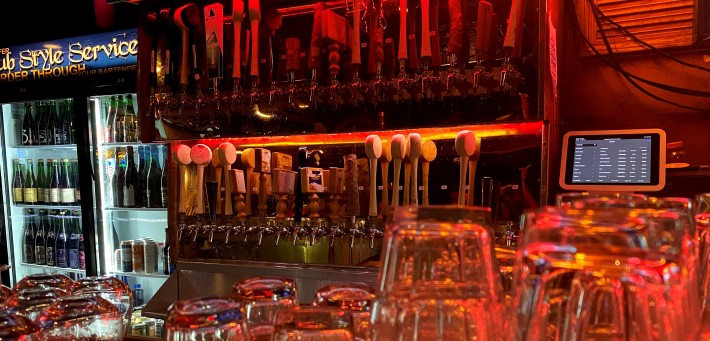
Following up, as promised, on a discussion about The New York Times article headlined, “Last Call for the Beer Bar?” it seems fair to start with words from Josh Bernstein, who wrote the article that might otherwise been headlined, “The Evolution of the Beer Bar.”
“There is most definitely a place for beer bars that are integrated into a community and serve it well, with well-chosen beer and other beverages,” he wrote on Twitter.
Isn’t that the way it has always been? Flip through the “Bars of Reading” (1988), Pat Baker’s “Beer and Bar Atlas” (1988), either of the two books on the subject Daria Labinsky and I wrote, “Beer Travelers Guide” (1995) and “Beer Lover’s Guide” (2000), or others that have followed in the same vein since and that is pretty obvious.
 Does the draft selection need to be “better” than the Northeast Taproom in Reading? When Pete Cammarano bought the place in 1983 the draft choices were Budweiser and Schmidts. By the time “Bars of Reading” was published five years later Pete offered the best beer selection in Berks County. Authors Suds Kroge and Dregs Donnigan wrote, “Pete is the answer . . . but we forget the question.”
Does the draft selection need to be “better” than the Northeast Taproom in Reading? When Pete Cammarano bought the place in 1983 the draft choices were Budweiser and Schmidts. By the time “Bars of Reading” was published five years later Pete offered the best beer selection in Berks County. Authors Suds Kroge and Dregs Donnigan wrote, “Pete is the answer . . . but we forget the question.”
We first visited in 1994 and fell in love with the place. We went back in 1997 and fell in love again. The beer selection had evolved. Pete sold the place long ago, but this picture from the taproom’s Facebook page suggests beer is still taken seriously.
At the end of 1987 there were 73 U.S. breweries operating that opened after Fritz Maytag bought Anchor Brewing in 1965, plus Anchor itself. Forty-four of the 55 small breweries that began selling beer in 1988 were brewpubs, compared to only 29 brewpubs total when the year started. Several of those brewpubs grew into very large breweries, and they are well known today (Goose Island, Deschutes, North Coast, Great Lakes, etc.).
Thus the “Beer and Beer Atlas” arrived during a watershed year, documenting what came before 1988. Michael Jackson wrote the foreword, concluding: “A Beer and Bar Atlas has long been overdue in the United States. Now there is enough to write about, someone has done it. The people who have compiled it are American heroes. It must have been an exhausting business but they have tracked down the Right Stuff.”
The descriptions are not long. Quencher’s in Chicago is “a pleasant neighborhood saloon with seven tap and a large bottle collection. Includes interesting regional beers plus imports.” Quencher’s closed in 2018 after 39 years in business, and until its final days was a local outpost for beers from some of the newest breweries in the city.
One final thought. The book includes a list of beer “movers and shakers.” One of them is Jim Atkinson, who Baker credits with inventing the term “bar bar.” In a 1983 essay in Texas Monthly, he wrote bar bars “can best be described as places where you can go and engage in the sacred rite of public drinking and not be there.”
His rules of drinking include extensive side rants about establishments that are not bar bars, such as fern bars. “The decorative motif of most fern bars is equally contrived. I sacrificed my body and actually had a drink in each of the countless fern bars along Austin’s renovated East Sixth Street to get an overview of current trends,” he writes. “The scheffleras and sundry items of Irish crapola are still in place, but there’s been a little improvising on the basics over the past few years. One of the stronger themes is this high-tech deco business, which involves plastering the interior walls with shower tile, leaving a bunch of pipes and wires exposed in the ceiling, and putting some forties and fifties music on the jukebox.”
His third rule of drinking states “Nothing civilized ever resulted from the drinking of beer.” And that ramble concludes:
“What I’m getting at is that beer bars have sufficient funk to be bar bars, but they lack the requisite soul. That elusive quality is inseparable from booze—whiskey, martinis, and of course the ever-present shooter of tequila or schnapps—and the special kind of stupor it creates. Beer can just never quite get you nowhere, and thus, while beer bars are vastly superior to many other genres, they are forever doomed to being a brick shy of a full load.”
I don’t think I agree.